Project Name:
Huabao New Village Sewage Treatment Station Project in Liqianhu Town, Tieling County, Liaoning Province
Project Overview:
The lack and pollution of water resources seriously constrain the healthy and sustainable development of China's overall economy. The lagging environmental protection infrastructure and low management level have hindered the improvement and enhancement of the quality of life of rural residents. Currently, the country is increasing efforts to support the environmental governance work in new rural areas, and water environment governance in rural areas has become an important component of China's comprehensive environmental governance. The People's Government of Liqianhu Town, Tieling County, in order to protect the environment, create social and environmental benefits, and respond to the goals of achieving "carbon peak" by 2030 and "carbon neutrality" by 2060, has built a sewage treatment station in the town that combines advanced patented process technology with photovoltaic power generation. It has vigorously promoted the combination of simple operation, effective pollution control, and clean energy models, Simultaneously achieving the application and practice of combining small water wastewater treatment with photovoltaic power generation.
Main process: reverse thrust high-efficiency denitrification+aerobic MBR/artificial wetland
The reverse push high-efficiency denitrification+aerobic MBR/artificial wetland process is adopted in non severe cold and low temperature climates, and the reverse push high-efficiency denitrification+aerobic+vertical flow sedimentation+artificial wetland process is adopted; In severe cold and low-temperature winter climates, the "reverse thrust high-efficiency denitrification+aerobic MBR" process is adopted. The use of this composite process system reduces operational energy consumption, achieves sludge reduction, reduces alkali and carbon source input, saves operation and maintenance costs, enables stable and standard discharge of dispersed wastewater treatment, improves water environment, and has good environmental benefits.
Process flow diagram:
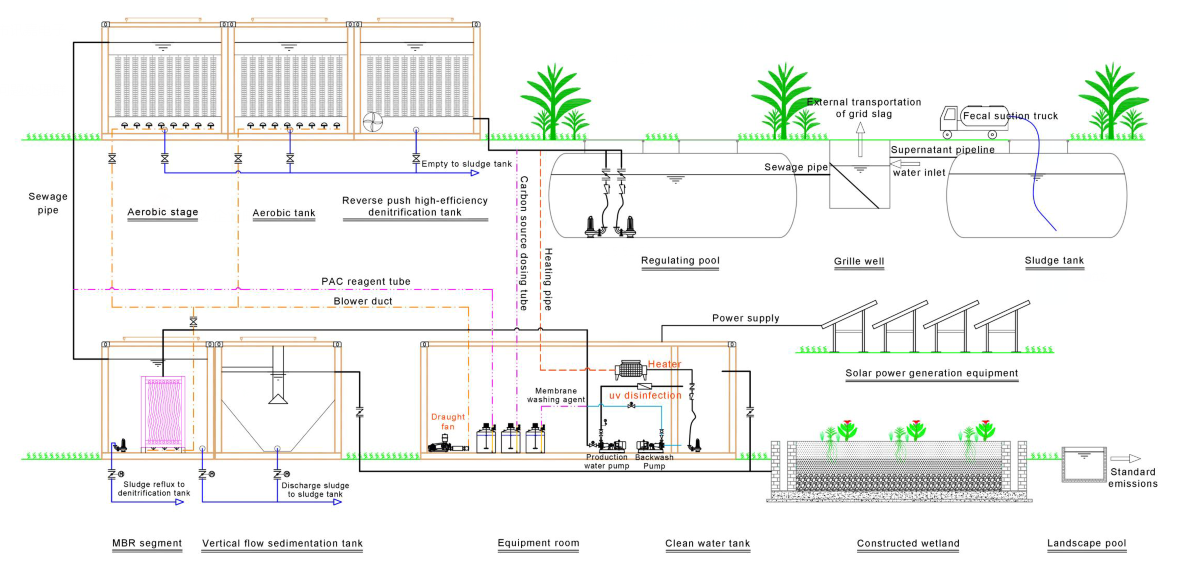
Domestic sewage is treated in dispersed septic tanks, enters the grid well through the pipeline network to remove large particles of floating debris, and then enters the sewage regulation tank to regulate water volume and balance water quality; Afterwards, it enters the reverse thrust high-efficiency denitrification tank, where organic matter undergoes hydrolysis, acidification, and methanation to remove organic matter from wastewater. At the same time, short-range nitrification and denitrification reactions occur, resulting in efficient denitrification. Subsequently, the pollutants are finally decomposed by aerobic bacteria attached to the packing in the aerobic tank, and the phosphorus is separated from the wastewater by the phosphorus aggregation effect of aerobic microorganisms, In non severe cold and low temperature climates, vertical sedimentation tanks are used to achieve solid-liquid separation of mud water mixtures through gravity sedimentation, thereby achieving the removal of organic matter and nitrogen and phosphorus. Finally, the sewage is treated by artificial wetlands and discharged to meet the standards; In the cold and low temperature climate of winter, the effluent from the aerobic tank flows into the aerobic MBR tank. The organic matter in the sewage is oxidized and decomposed in the aerobic zone. At the same time, the MBR membrane area is formed by the membrane module and aeration device to deeply purify the sewage. After reaching the standard, it is finally discharged.
Technical advantages:
1. The reverse thrust high-efficiency denitrification technology can reduce the amount of alkali added in the nitrification process by 20%; Shorten the reaction process and save 30% of the denitrification tank volume;
2. The reverse thrust high-efficiency denitrification technology saves 25% to 30% of oxygen supply, reduces fan power, and saves 20% of energy consumption;
3. The reverse thrust high-efficiency denitrification technology reduces the amount of carbon source added by 40%, achieving denitrification and denitrification at low C/N levels;
4. The aerobic MBR membrane technology reduces sludge production by 30%, achieving sludge reduction. The nitrification process can reduce sludge production by about 33% to 35%, and the denitrification stage can reduce sludge production by about 55%;
5. The aerobic MBR membrane technology has a strong ability to resist water quality impact loads. Due to its high concentration of biological phases, it has a strong ability to resist impact loads, especially for ensuring the stable operation of urban sewage treatment facilities with significant changes in water quality, which is particularly important;
6. Aerobic MBR membrane technology, based on the efficient interception effect of the membrane, can completely trap microorganisms in the bioreactor, achieving complete separation of hydraulic retention time and sludge age in the reactor, making operational control more flexible and stable;
7. The aerobic MBR membrane technology can operate under high volume load and low sludge load, with low organic load, long sludge age, low residual sludge production, and reduced sludge treatment costs.
Benefit analysis:
The sewage treatment plant engineering project conscientiously implements national energy policies, with the aim of rational utilization of energy, reducing energy consumption, and improving economic benefits. The circuit part of this project consists of solar photovoltaic panels (a total of 20 panels with a total load power of 8000W), inverters, three-phase AC control devices, and emergency backup municipal power grids; The use of clean and green energy has alleviated the pressure on municipal power supply, maximized the utilization of solar energy, and achieved a combination of energy conservation, technological progress, and environmental protection. The annual output of solar energy is 16128kWh, which saves investment costs on municipal electricity and system operation electricity costs.
Environmental benefit analysis:
Through the construction of rural sewage treatment, the living and sanitation environment in the surrounding area can be improved. After treatment, the sewage meets the Class IV surface water standard and is discharged, greatly reducing the pollution of the surrounding water bodies. The actual effluent quality of the sewage treatment station: CODcr concentration is 14mg/L, total nitrogen concentration is 5.63mg/L, ammonia nitrogen concentration is 0.059mg/L, and TP (total phosphorus) concentration is 0.08mg/L.
The emission reduction of pollutant factors in sewage treatment plants is 10.22 tons/year for COD, 3.61 tons/year for BOD5, 0.78 tons/year for TN, 0.69 tons/year for ammonia nitrogen, and 0.07 tons/year for TP; The sewage treatment station has a very high removal rate for microorganisms and organic matter in the water body, minimizing the impact of discharge on the environment.
Social benefit analysis:
The implementation of this project can improve the natural ecological environment, purify the regional water bodies, thereby improving the level of public health, and has a significant impact on the physical health and social stability of regional residents. The implementation of this project will promote the construction of rural ecological civilization in Liqianhu Town, and achieve the strategic goal of "urban water symbiosis and human water harmony".
Operational effectiveness:
Since the project was put into operation in 2021, a new process has been adopted to greatly improve the overall efficiency of nitrogen and phosphorus removal. At the same time, the existing treatment equipment has overcome the problems of long reaction processes, requiring a large amount of carbon and oxygen consumption, high operation and maintenance costs, occupying a large area, and a long construction period. At the same time, the effluent has stably reached the Class IV water standard for surface water. The main pollutants of the project, such as COD, ammonia nitrogen, total nitrogen, total phosphorus, and SS, have been well removed, The construction of this project is environmentally friendly, pollution-free, energy-saving and emission reducing, which is conducive to the harmonious development of society and also brings good economic, social, and environmental benefits.
Project site shooting:
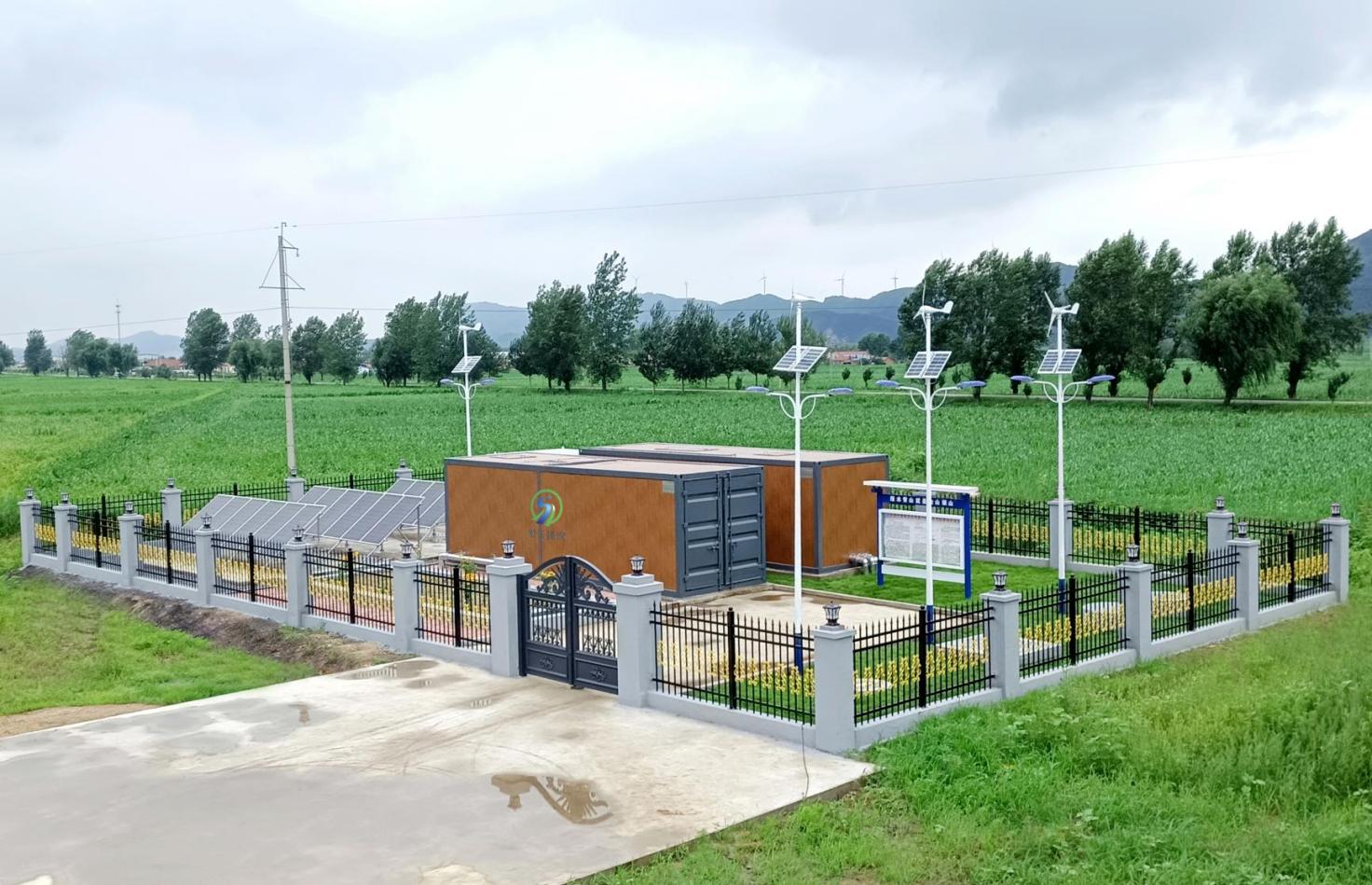
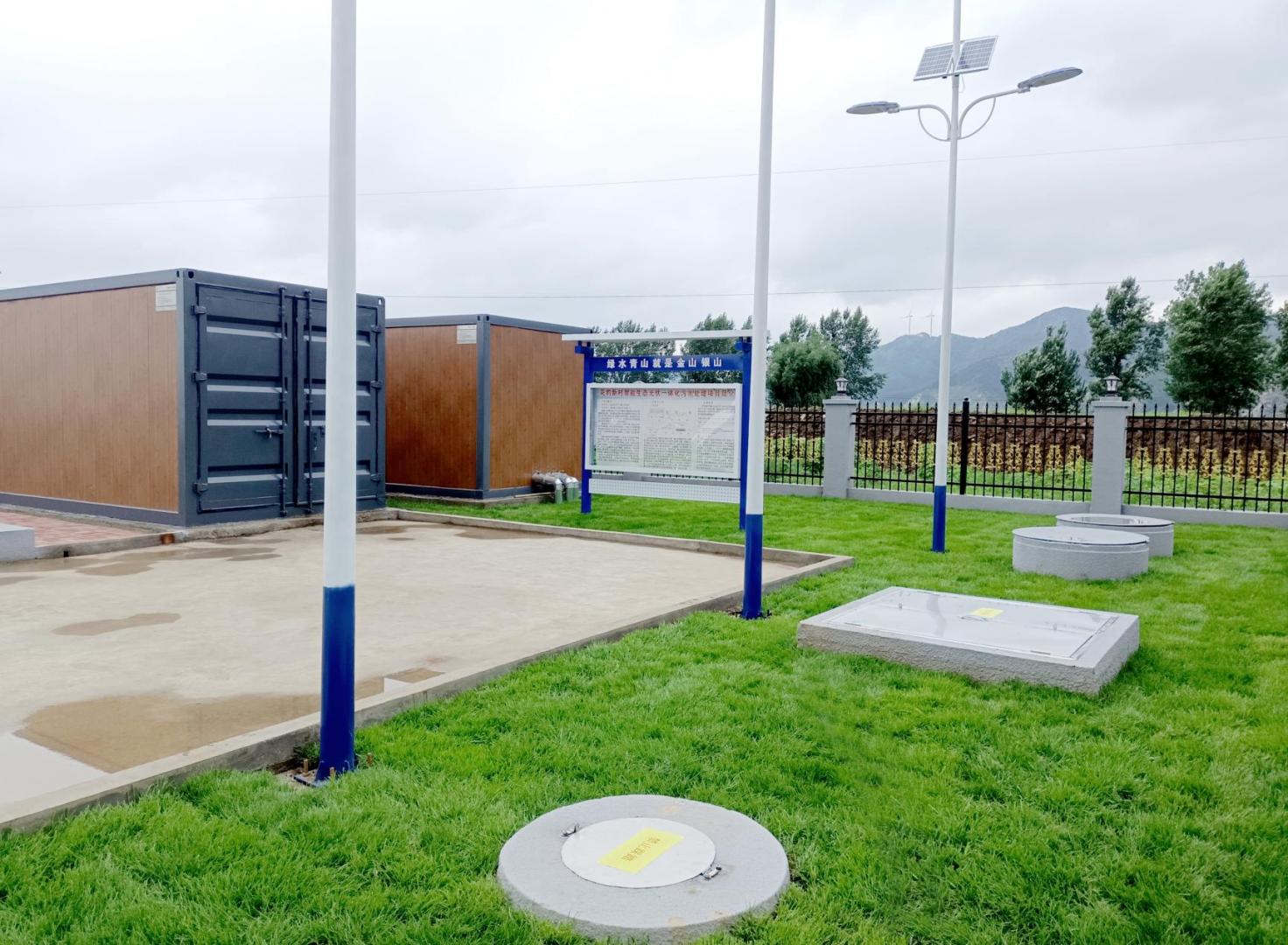
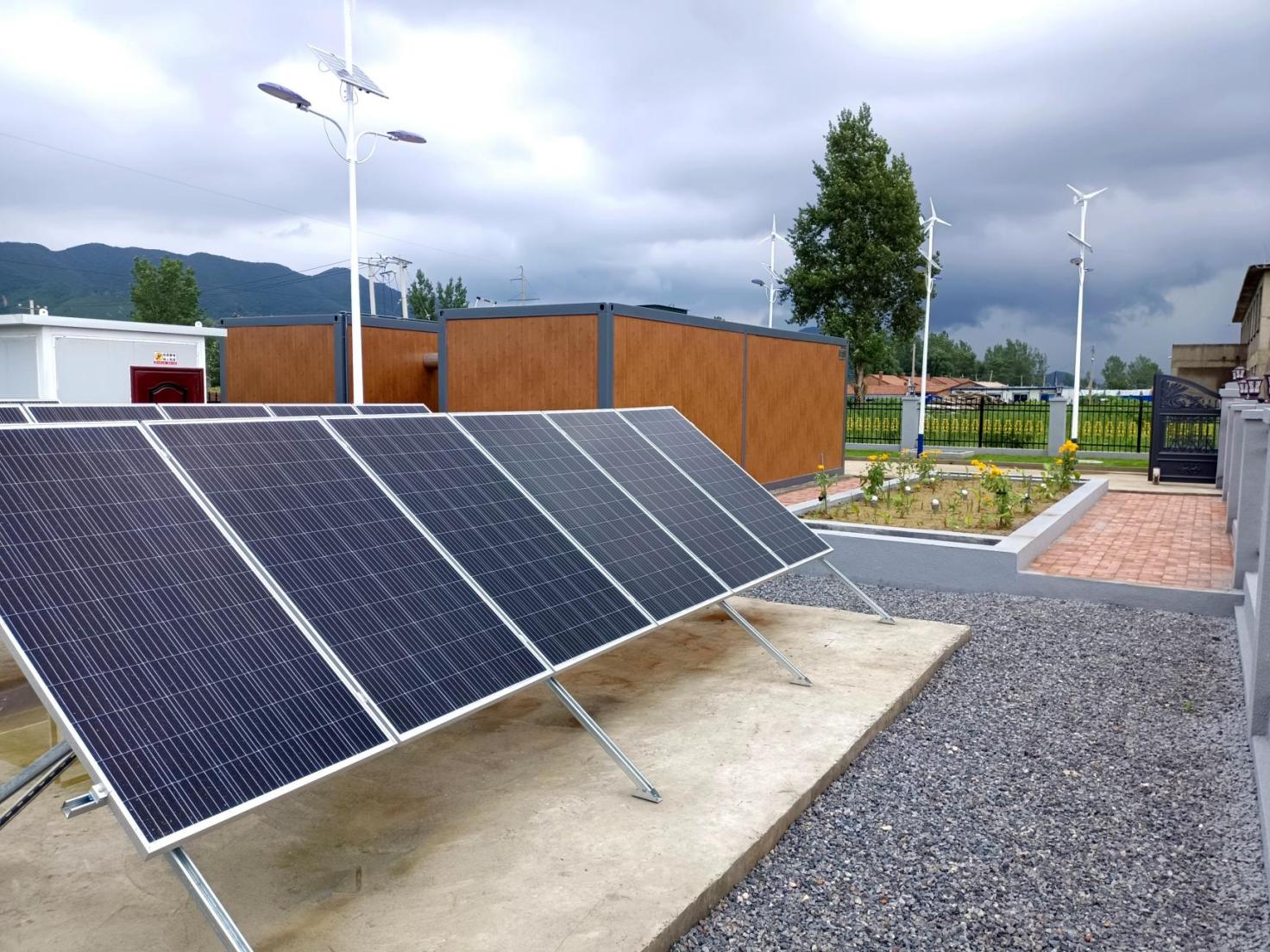
Water quality testing report:
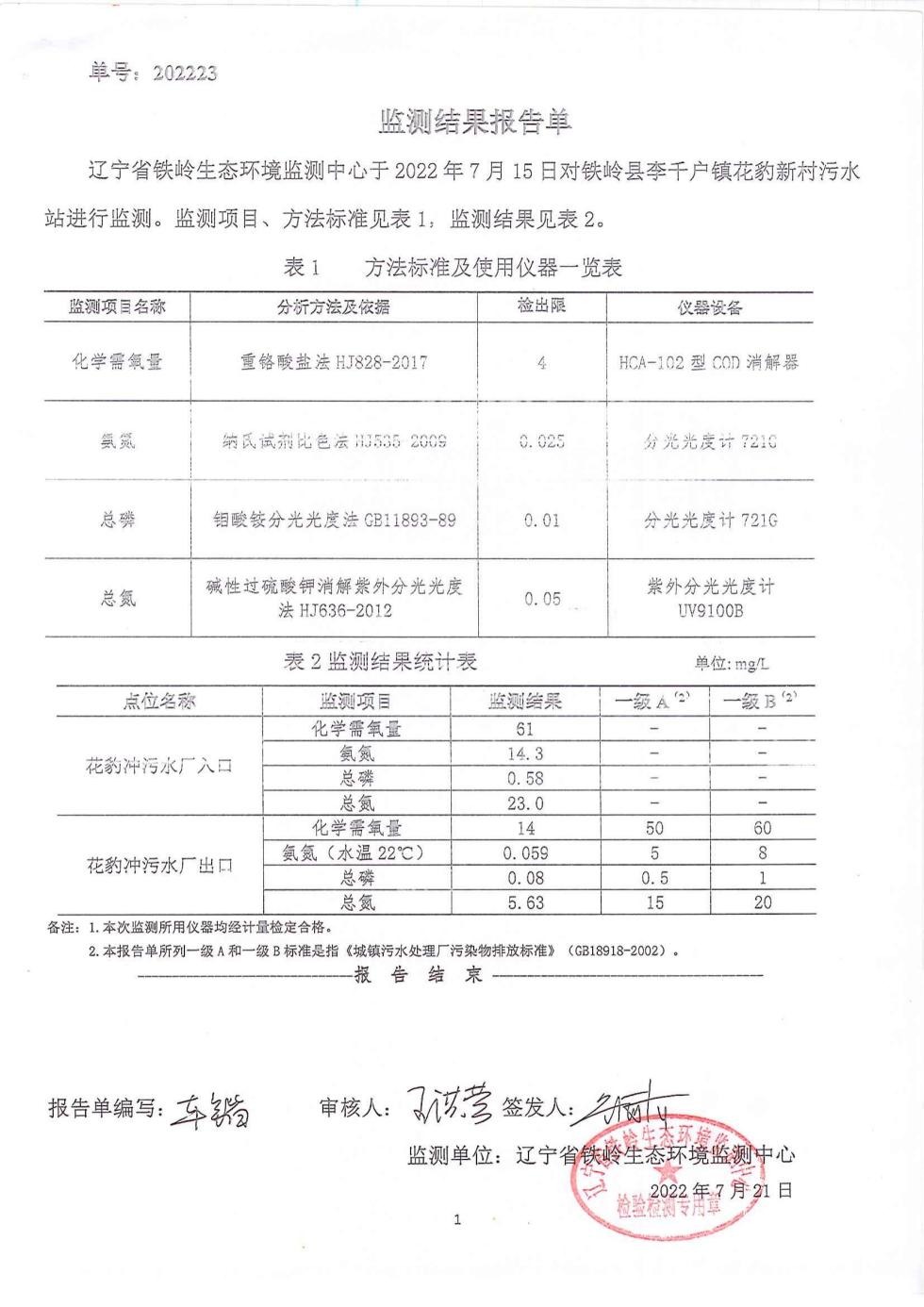
Post time: Dec-21-2023

